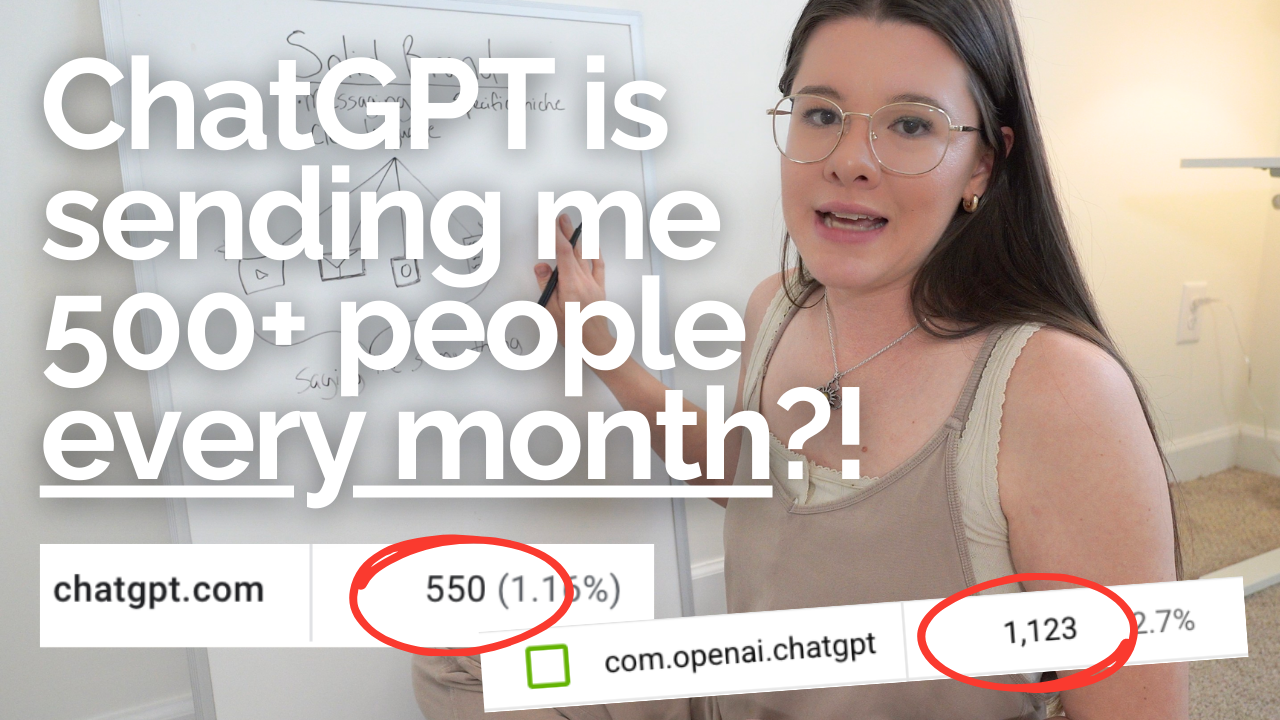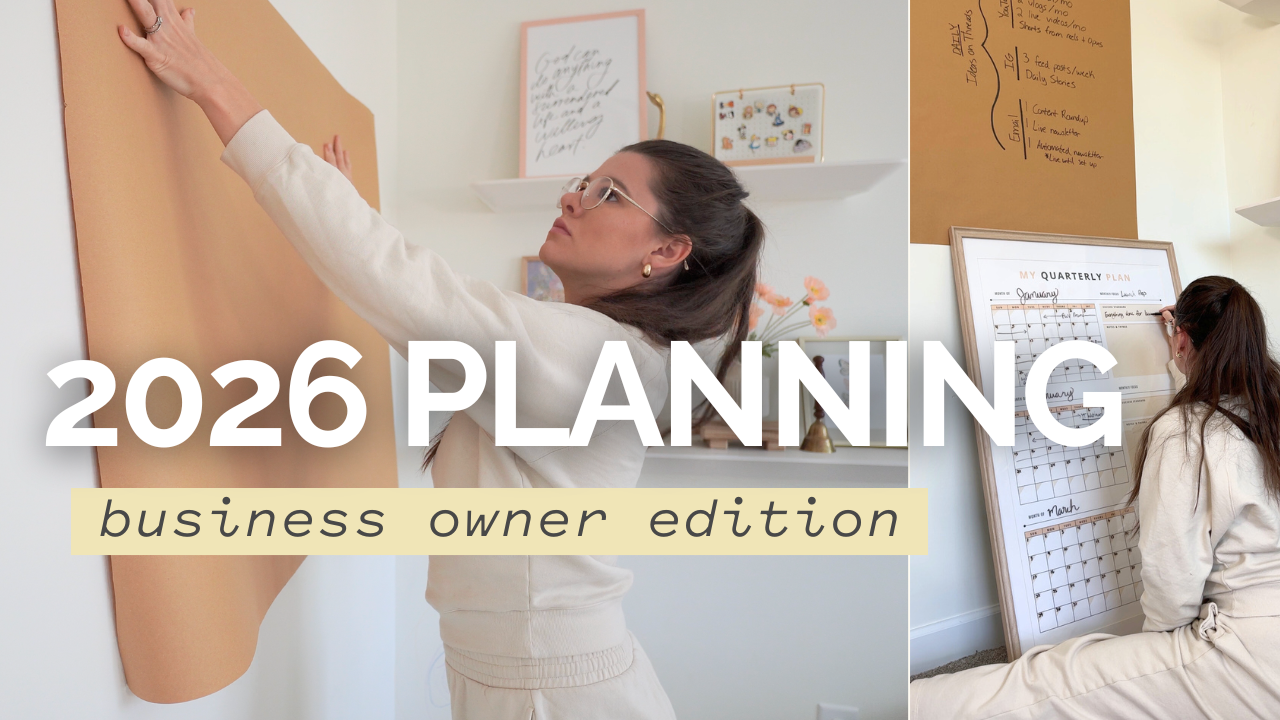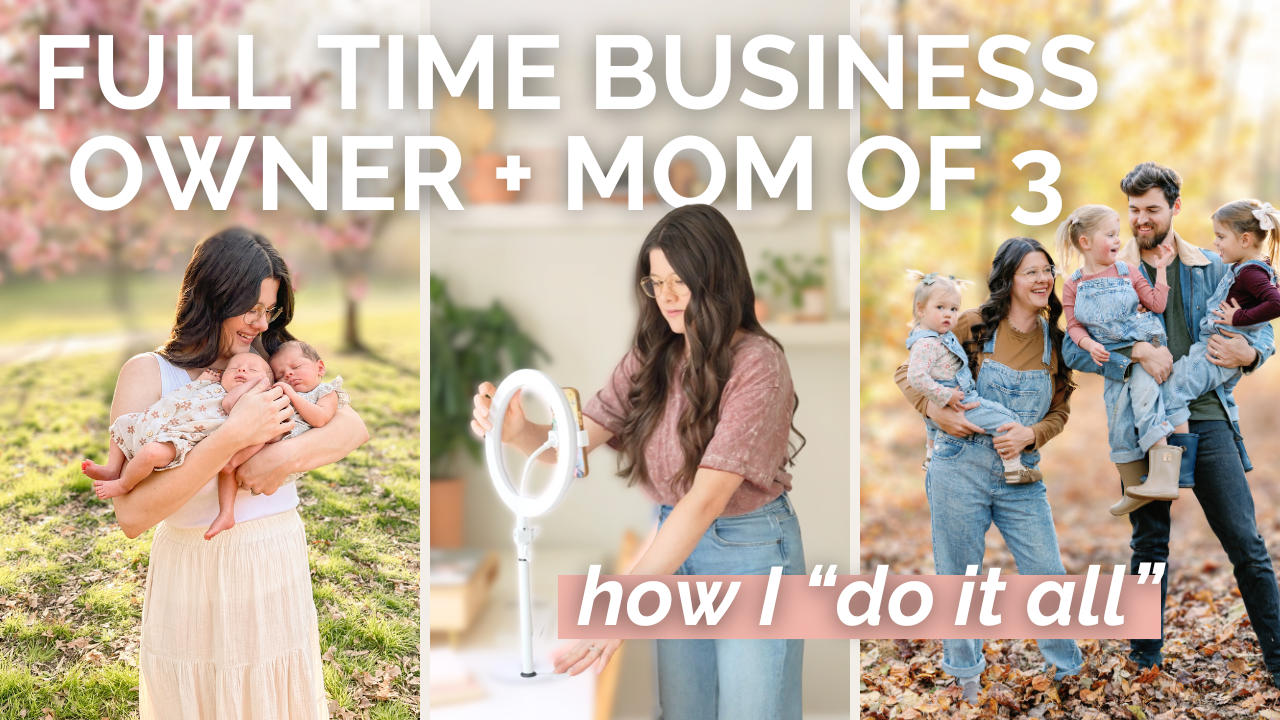Welcome to another episode of the Stephanie Kase podcast! This week, we’re talking about my entire YouTube creation process: how we plan, film, edit, and schedule YouTube videos every single week. I say “we” because I’m not the only person behind our YouTube videos anymore. There are a lot of team members who help make it happen. I recently did a YouTube video about how to use YouTube to grow your brand and I had several questions about the creation process I have, so let’s get into our YouTube workflow!
I’m now a mom to twin girls. We’ve spent years growing my YouTube channel the process, and my brand so that I’m in a place where everything is streamlined every well now. I get to show up, talk to the camera (which is the part I like doing) and then hand it off to my team to finalize and share.
Step One: Video Ideas
The first thing I have to do to create a YouTube video is coming up with the video idea. This is really about research. I have to hand it to Maggie, she’s really in tune with what people are asking for in our comments, DMs, and emails, which helps a lot. She puts those into our Slack channel so I have a list of ideas pretty often. For example, we’d been asked a ton about the Reels Play Bonus program, so I did two videos on that here and here. But, we basically pull ideas from a few different areas. First is the analytic section of YouTube. I go into our studio settings and see what keywords people are searching for to find me. What’s really interesting is finding out what terms you might not have included in your video originally that’s bringing people to you. Anyway, this has helped me create some videos on topics I might not have considered otherwise. This helps me to fill a gap in what exists and what’s needed for YouTube videos.
Research Topics
I also look at which existing videos have done really well and see what else I can create around that topic. For example, back in 2021 when I was growing my account, I noticed videos on Reels were doing super well. So I continued to make videos on that topic. When you see your videos go up slowly every day, you can determine that they’re ranking in searches – all of that means it’s doing really well and would be beneficial for me to create more videos around that topic.
Another way I find topic ideas is with Tube Buddy. This is an extension for your internet browser where you can do keyword research for YouTube. Basically, I can type in any keywords and see how likely it is I would rank with that video topic. This is huge for determining what kind of content to make. YouTube is a big search engine and works pretty similarly to Google. Tube Buddy helps take the guesswork out of your ideas. Look for ideas with a high search volume and low competition.
The third way we come up with video topics is by your suggestions. From Maggie to you directly leaving comments asking for ideas. I try to create content that is specifically asked for – and I recommend you doing the same. Find out what your audience wants and needs. Finally, the last way is to think about relevant content for the year. For example, in 2021 I created an Instagram Reels tutorial and then updated it in 2022 with whatever changes had come out. Generally, these updated versions of videos do really well!
Whenever new ideas come in, I add them to my Trello board. I use my content calendar to log ideas and then turn them into videos. Grab my content calendar Trello template here!
Step Two: YouTube Workflow
For each video we create, there’s probably 30-40 steps our team has to complete for it to go live. We keep track of all of this on Trello. On the cards, we track everything from filming to editing to scheduling, even writing our blogs. I duplicate our template card for every new video and then the whole team uses that to track their steps. So right now our steps look like: I film and edit, Maggie schedules everything, Kristina creates our blog. Our Trello board is great to clearly communicate what’s going on with every video. We also chat in Slack about the progress, too.
Step Three: Filming Videos
Before I sit down to film anything, I write a detailed outline on the Trello card for that video. It’s what I’ll look at when I’m filming to make sure I don’t miss anything. I also add the exact title I’m going to used based on research on Tube Buddy and then we copy the workflow steps. When I sit down to film, I Try to film anywhere from 4-6 videos at a time so I can be done for a few weeks. It depends how long they are and how in-depth things go, but usually that’s possible. I try to film about once a month so that we can stay ahead of our content! By staying a few weeks ahead, we’ve found a sweet spot for our team and our research. If we try to plan too far in advance, things may shift and the topics we wanted to use may not be relevant anymore. This schedule gives me much more flexibility to adjust based on feedback or comments we get!
A note about batching…
When I’ve batched further in advance (like my maternity leave), I don’t necessarily see a dip in our analytics, but I’m also not seeing a lot of growth. That’s because I’m not jumping on relevant topics. It’s still good to be consistent and allowed us some freedom and flexibility, but it wasn’t as great as it could have been.
When I sit down to batch film my YouTube videos, I’m doing my hair and makeup. I also have a few tops pulled out of my closet so I can change between videos. This just helps make it less obvious I’ve filmed them all in one sitting! I’ll try to adjust my hair and accessories, too. When I’m ready to film, I try to batch like videos. So if I need my computer or phone for a tutorial, I’ll want to do all of those first. It just saves time to not have to setup or move around a bunch between videos. I’ve started filming again with the babies now and we’re making it work! Just planning in advance makes all the difference.
Once I’m done filming and have taken a few photos for the thumbnail, I upload the content to the computer and move onto the next one. When I’m done, it all gets sent to the editor – any screen shots, the files, and my screenshots. Right now, I’m the one editing but when I have a video editor, they get it all to piece together. I currently edit with Descript and Final Cut Pro. Once the edits are done, it gets put into a Google folder for Maggie to review. From there, she does the next set steps to get it ready to go live. She’ll add the video to YouTube, add links and descriptions, make sure we’re linking to videos or our freebies and then lets Kristina know it’s ready to turn into a blog. Kristina then takes the content, creates a blog, optimizes it for SEO purposes and hands off the link to Maggie.
Step Four: Growing the YouTube Channel
After the video is live, there’s still a few steps that Maggie manages for me. This helps us understand what’s working and what’s not. She’ll track our specific YouTube analytics – things like subscribers and views. She puts together our analytics report each month so we can see what’s going on. Maggie also handles comments on our channel. From there, we can see what else we might want to film and the cycle begins again.
I hope that breaking down my YouTube channel workflow was helpful for you! Make sure to check out my recent episode about our YouTube strategy so you can continue to grow your brand and business online, too!
Got an episode idea?
If you’re listening and you have ideas about what to talk about next, please send in your requests! I really do want to know what you want to hear about in future episodes. Email me at [email protected] with your questions!! I can’t wait to hear from you! Don’t forget to leave us a review on Apple Podcasts, too. We appreciate all of the support and love!


